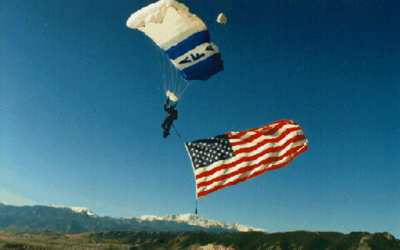-
Content
4 -
Joined
-
Last visited
Never -
Feedback
0%
Community Reputation
0 NeutralGear
-
Main Canopy Size
169
-
Reserve Canopy Size
181
-
AAD
Cypres
Jump Profile
-
Home DZ
Skydive Dallas
-
License
D
-
License Number
12224
-
Licensing Organization
USPA
-
Number of Jumps
1100
-
Years in Sport
21
-
First Choice Discipline
Formation Skydiving
-
First Choice Discipline Jump Total
900
-
Besides covering them with stickers
-
Has anyone come up with a way to touch up minor scratches on the black soft touch finish?
-
Old jumper wanting to get back into the sport
rfreddo replied to Hunt_Joshua_G's topic in General Skydiving Discussions
Congrats to Dad for wanting to get back in the saddle, and to you for being his role model. I had about a 13 year layoff between 1994 and 2007 (D license and 1000+ jumps before the layoff), and found it pretty easy, but somewhat intimidating, getting back in. The biggest issue for me was getting up to speed with all of the changes in the sport. For example, when I stopped jumping, ZP canopies were almost unheard of (at least where I jumped), Cypress was synonymous with student, experienced jumpers all wore frap hats, if anything (Dad will know what that means) and hook turns / swooping were something done by the outlaws down at Deland (hooks would get you kicked off many DZs). Flying a pattern was pretty much unheard of as most jumped 7-cells and were aiming for the peas. And if you found yourself head down or on your back, it was a sure sign that you needed to arch harder and get back in proper belly flying position. Oh, and then there's the whole generational thing. Seems to be a lot more ink and piercings at the DZ these days! So for me the transition was made a lot easier by getting back in the USPA (got my 20yr certificate a week after rejoining. Pretty cool.) and reading Parachutist, getting my hands on a current SIM (there have been a LOT of changes), haning out at a DZ and lurking on Dropzone.com. But probably the best thing I did was spend 30 minutes in the tunnel at Eloy. I was surprized that the flying was really like riding a bike, but as far as a confidence boost, I think it was irreplaceable. If Dad can find an instructor who will spend some time with him in the tunnel, then make a jump with him for recurrency, he will be well on his way to getting back in with both feet. Good luck and blue skies to you and Dad! We can always use more old farts around the DZ! -
Here's a body position mental image that I stumbled upon many years ago when working with low jump number students on docking. I'm not a current instructor, and haven't been for many years, so maybe this is alreay part of the current curriculum. Anyway, for some this helped, for others it didn't. For many, using this mental imagry in combination with video really made the light go on. When we're teaching students to move using legs, we tell them legs out to move forward, in to go back and neutral to fall straight. Then we put them on a creeper and practice and hopefully build some muscle memory. Then we jump, and for many it's a frustrating experience as they swear up and down that they had their legs out and couldn't go forward, or had their legs neutral and back slid. The problem for many of them, it occurred to me, is that the muscle memory we teach on the ground is not the same as the muscle action we use in the air. For example, to maintain a neutral leg position on the ground, we have to contract our hamstrings to fight gravity and keep our lower legs from falling to the floor. But in the air, we have to use the opposite muscles to keep our legs from being folded up behind us by the force of the relative wind. So when a student feels like he is extending his legs in the air, he may actually only be applying enough force to maintain a neutral position. Similarly, when he feels like he's holding a neutral position in the air, he may actually have his legs folded up behind him if he's not pushing against the wind. Anyway, just thought I'd throw that out there. I've seen it help some who were having docking issues related to leg position.


